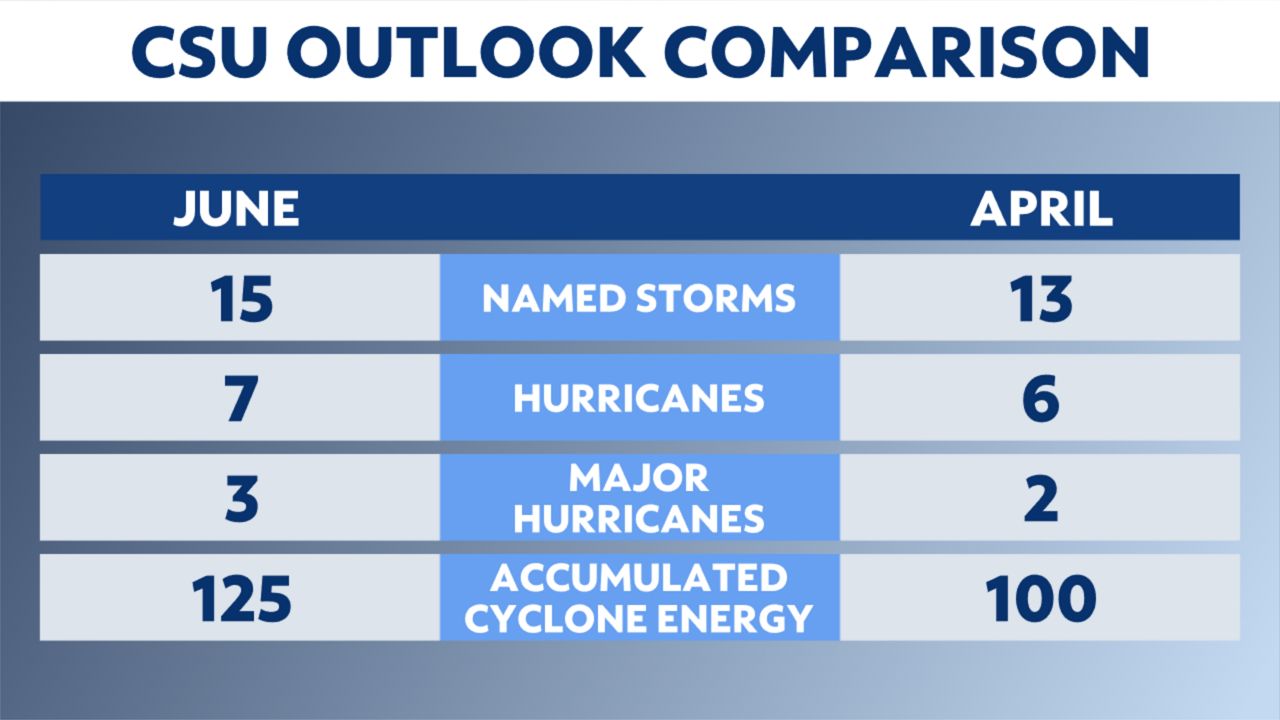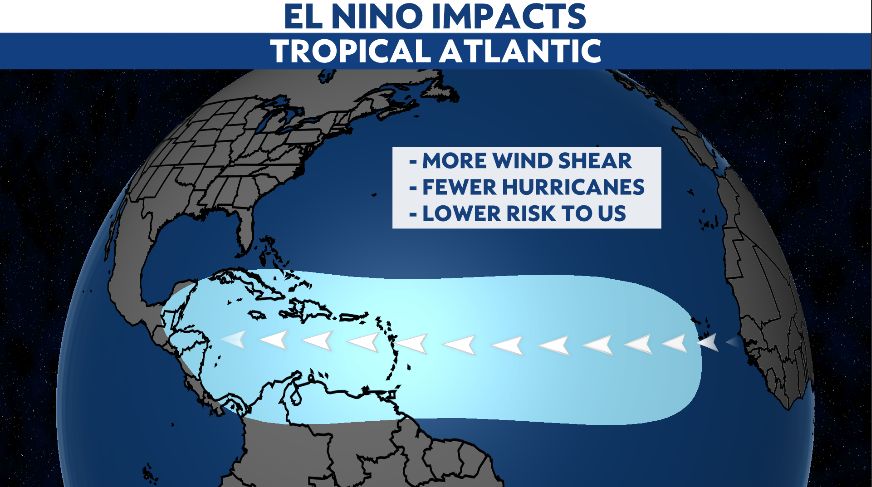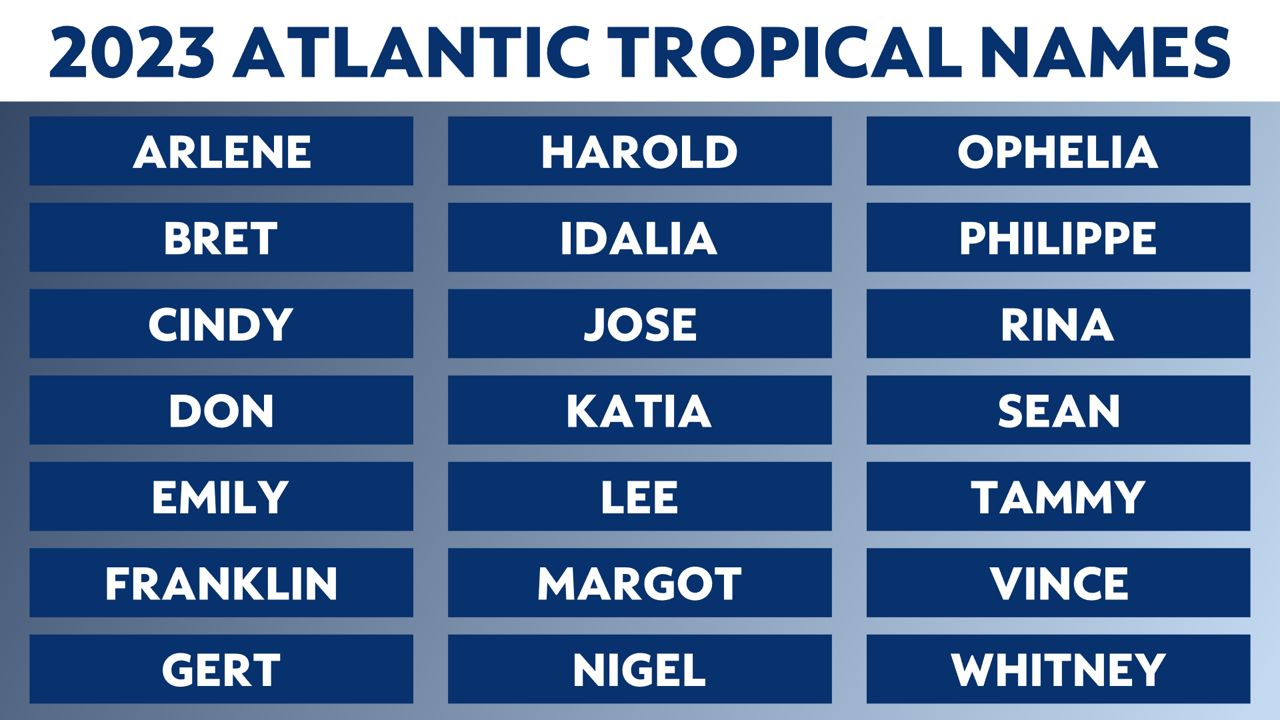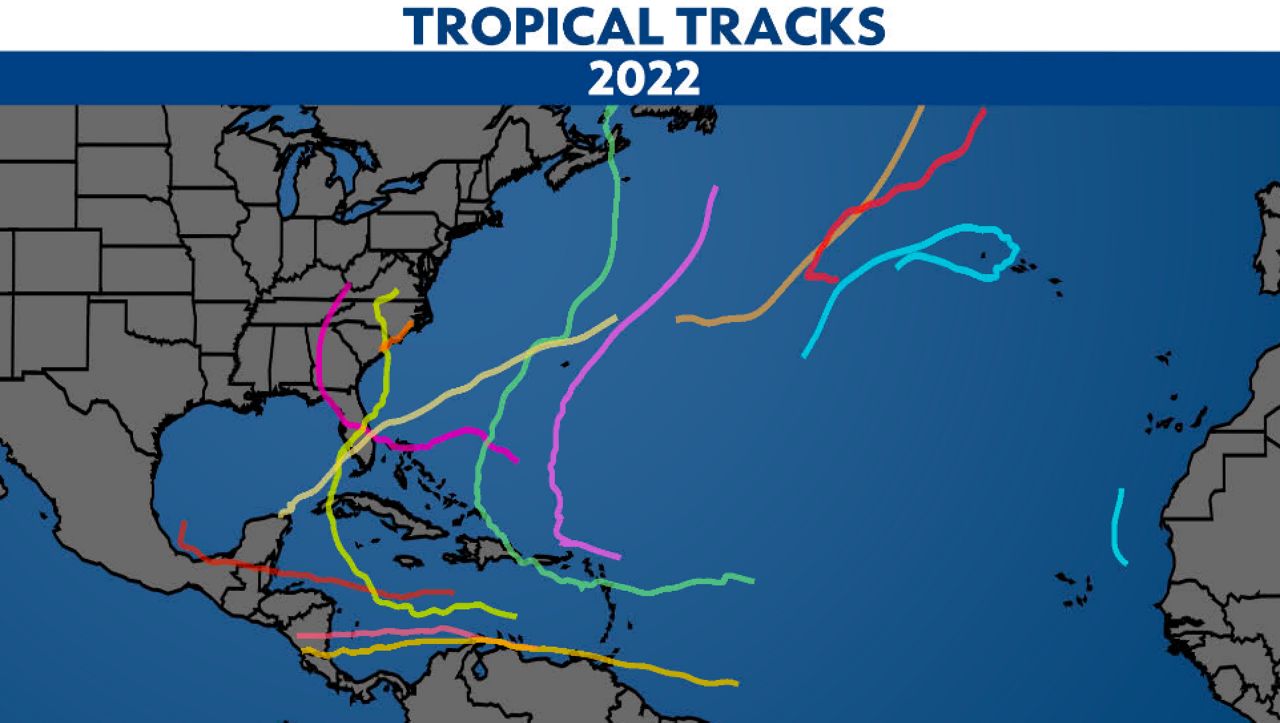Colorado State University released its updated outlook for the 2023 Atlantic hurricane season on June 1. Their researchers now forecast near-average activity this year.
The CSU tropical forecast, led by Dr. Phil Klotzbach, calls for 15 storms this upcoming season, including the unnamed subtropical storm that formed in January.
CSU forecasts seven of the storms to become hurricanes, including three major hurricanes, which are a Category 3 or higher on the Saffir-Simpson Hurricane Wind Scale.

This is slightly higher than its first outlook in April. NOAA's outlook from late May calls for 12 to 17 named storms, including five to nine hurricanes and one to four major hurricanes.
Accumulated Cyclone Energy, which factors the number of storms and their duration and intensity, is forecast to be 125, compared to an average of 123.
Researchers look at a variety of factors to make their prediction.
El Niño conditions likely return this summer around the peak of hurricane season, which would be the first time since 2018 and 2019. El Niño leads to stronger upper level winds, or wind shear, in the Atlantic, which is less favorable for tropical development.

On the other hand, ocean temperatures in the Atlantic are quite warm compared to average, which could help counteract some of El Niño's effects. These competing factors mean the predictions are more uncertain than usual.
Remember, predictions of the season’s activity are not predictions of exactly how many storms will make landfall in a particular place. Individual storms make impacts, regardless of how active (or not) a season is. Coastal residents should do what they can to be prepared every year.
The 2023 Atlantic hurricane season will come with some new changes and a new list of names.

Last year's season had near-normal activity in terms of named storms and hurricanes, but below-normal ACE.
Of the notable storms, Hurricane Ian and Fiona both got retired after causing significant death and destruction in Central America, the Caribbean, the United States and Canada.

Our team of meteorologists dives deep into the science of weather and breaks down timely weather data and information. To view more weather and climate stories, check out our weather blogs section.



